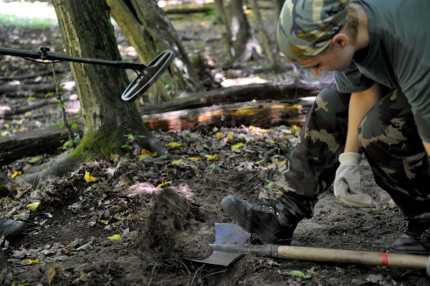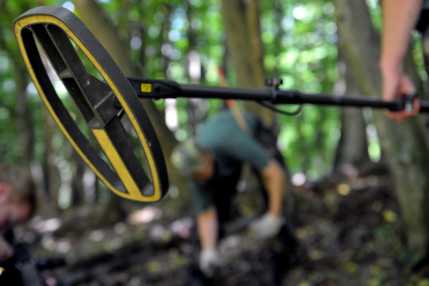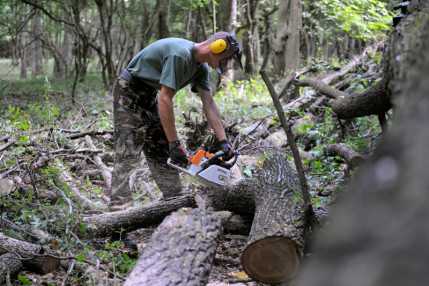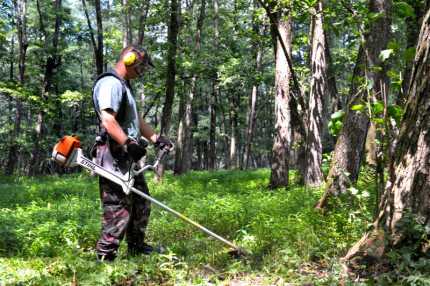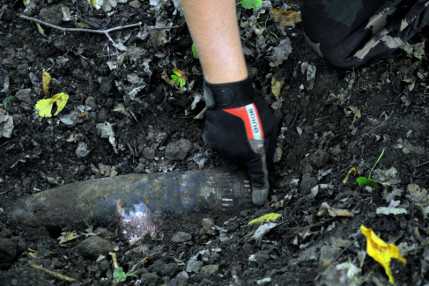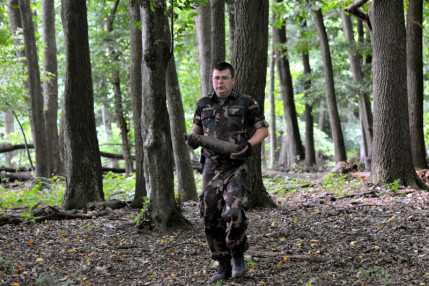“Warrant Officer, I’ve Found a Shell!”
Szöveg: László Szűcs | 2011. augusztus 7. 6:00Once it was the artillery range of Hungarian and Soviet military units stationed in Somogy county – today it is a land managed by the HM Kaszó Erdőgazdaság Zrt. (MoD ‘Kaszó’ Forestry Ltd.). Similarly to every other artillery range, millions of small and large pieces of shrapnel are scattered around here, together with broken half-shells and even a few intact ones. The latter would pose serious danger to workers if they started logging in the area.
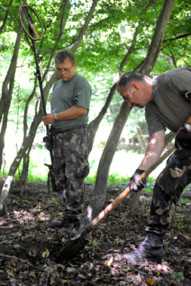
We find the EOD team in charge of UXO clearance deep inside the forest, more than six kilometers from the road connecting Nagyatád and Berzence. The “noise of civilization" cannot reach this site, the forest seems almost untouched, and fortunately, there is no sign of garbage or illegally dumped rubble that we so often encounter in other places. After a 50-meter walk off the forest road, the leaves of the trees close up behind us, and we feel as if we were in the middle of the wilderness…
This year the EOD patrols have been working in the area for four weeks now. They usually form 14-man teams to execute the task in weekly rotations, in order to make sure that not even a single unexploded shell is left on the woodland to be logged.
“The intact artillery and tank shells would pose danger to the workers while they are burning twigs on the site, after felling the trees and transporting the trunks. Due to the intensive heat, the UXOs lying on the ground and in the topsoil can easily go off", as we learn from WO Róbert Sulykovszki, EOD patrol leader, the officer in charge of the area to be cleared of UXOs this week.
That is why – he adds – the EOD team has been tasked with reconnoitering the ground down to a depth of 40 centimeters so that they can detect every UXO.
Their job is not easy, but as WO Sulykovszki tells us, it is not too complicated from a professional point of view. What makes it difficult is the thick undergrowth covering the area designated for clearance. The team splits up so that most EOD troops start conducting an instrumented explosive ordnance reconnaissance (EOR) in the de-vegetated area of the forest, while two are working along the strips designated for the coming days, clearing the ground of the undergrowth and the large branches of huge trees that fell over the past years.

The detector is set off many times – says WO Sulykovszki, adding that in most of the cases all they find are pieces of shrapnel of various sizes. It rarely happens that some broken half-shells are unearthed, and they find one or two intact ones as well as some machine gun or automatic cannon projectiles every day.
“Warrant Officer, I’ve found a shell!" – one of the EOR team members equipped with a metal detector says at last. In line with the standard operating procedures (SOPs), he stops working and moves back to a safe distance while the patrol leader examines the UXO. Fortunately, this 100mm shell is not dangerous, and even though it was left unexploded after the impact, its fuse is broken and there are no explosives left inside it any more. The rusty piece of metal weighing several kilograms is to be taken to the “ammunition dump" – there are already a few smaller pieces of ammunition found earlier today inside the ammo box concealed under the ground – and they will dispose of it at the end of the day.
While the patrol leader is taking the shell to the depot, Capt. Attila Jansik, the acting S2 (intelligence) chief of the regiment tells me that the forestry requested the unit to carry out UXO clearance in 2009. In the first year they managed to clear a quarter of the nearly 100 hectares of land of the dangerous UXOs. Their work continued into 2010, so they cleared a total of 16.5 hectares last year. This year they would like to clear 20–25 hectares, and during the last three weeks they have reconnoitered an area of more than 6 hectares.
Since the area was in use as a tank and artillery range from the 1950s until the 1980s, mostly 100mm fragmentation shells and 23mm anti-armor shells have been found here. In addition to these, in the past few years the EOD teams came across ammunition for assault rifles, machine guns and automatic cannons as well.
Work is going on smoothly in compliance with the SOPs, so the deputy regimental commander finishes the inspection. As we are leaving the area, I learn from him that the EOD and Warship Regiment has had a number of similar UXO clearance tasks in recent years. Within the bounds of their public service-related activities, they strive to clear these areas of UXOs as soon as possible.
In addition to the above tasks, their important duties include the continuous UXO clearance of the HDF shooting ranges that are still in use – for example the zero point range near Veszprém, the Csörlőház range near Várpalota, and the one in Tatárszentgyörgy, says Lt-Col. Tibor Horváth.
Photo: Tünde Rácz
(Click on our gallery for more pictures!)
